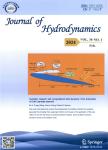DESIGN OF IMPLANTABLE AXIAL-FLOW BLOOD PUMP AND NUMERICAL STUDIES ON ITS PERFORMANCE
DESIGN OF IMPLANTABLE AXIAL-FLOW BLOOD PUMP AND NUMERICAL STUDIES ON ITS PERFORMANCE作者机构:Shanghai East Hospital Afiliated to Tongji University Shanghai 200120 China China Ship Scientific Research Center Wuxi 214082 China
出 版 物:《Journal of Hydrodynamics》 (水动力学研究与进展B辑(英文版))
年 卷 期:2009年第21卷第4期
页 面:445-452页
核心收录:
学科分类:081901[工学-采矿工程] 0819[工学-矿业工程] 07[理学] 070601[理学-气象学] 08[工学] 0706[理学-大气科学]
基 金:supported by the National High Technology Research and Development program of China (863 Program, Grant No. 2007AA02Z439) The Program for Outstanding Medical Academic Leader of Shanghai
主 题:implantable axial-flow blood pump CFD numerical prediction performance
摘 要:This article presents the design of a new implantable axial-flow blood pump. The special feature of the flow channel inside the blood pump is that the blood is driven by a big-small tandem impeller installed in the inner hole of the cylinder magnet of a brushless direct current motor. The inner hole makes the main flow channel possible, while the gap between the inner end of the stator and the outer end of the cylinder magnet gives the shape of the tributary flow channel. There is no motor magnet inside the main flow channel, therefore, more blood can pass through it. The gap of the tributary flow channel is very small, but the blood flow in it is not blocked. Thus, the efficiency is increased and the volume and weight of blood pump can be reduced greatly. The outer diameter, length and weight of the manufactured implantable axial-flow blood pump are 29.6 mm, 76 mm and 158 g, respectively. The impeller spins at the speed of 9000 rpm and can generate a pressure head of 100 mmHg and a flow rate of 8 L/rain. In an animal experiment, the blood pump has been successfully applied as a Ventricular Assist Device (VAD) in the chest of a small cow. Besides a mathematical model is established to simulate the flow inside an axial-flow blood pump of implantable VAD. The numerical studies on the performance of the implantable axial-flow blood pump are carried out by combining this mathematical model and the Fluent software. The numerical results agree well with those of experiments, with the maximum error less than 10%.



